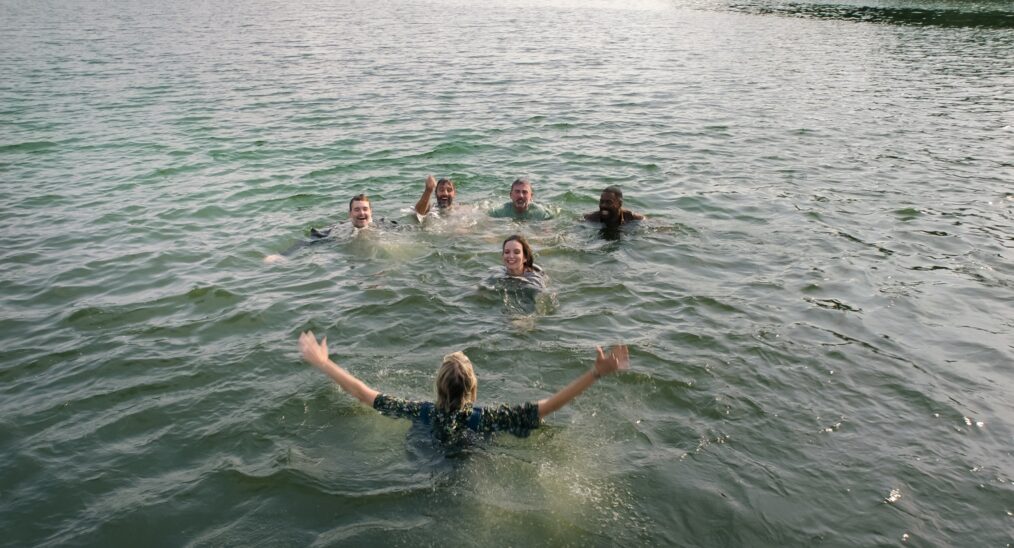Remediation Challenges: Cleaning Up Abandoned Gold Mine Pollution

Table of Contents
The Scale and Scope of the Problem
Extensive Contamination:
Abandoned gold mines often contaminate vast areas with heavy metals (arsenic, mercury, lead, cyanide) and acidic drainage, creating a serious environmental hazard.
-
Point 1: Widespread Nature: The problem is global. Millions of abandoned mines worldwide, many from historical gold mining operations, contribute to widespread soil and water contamination. The exact number is difficult to ascertain, but estimates suggest tens of thousands of abandoned gold mines alone pose a significant threat.
-
Point 2: Long-Term Consequences: The long-term consequences of this contamination are severe. Heavy metal contamination can persist in the environment for centuries, leaching into groundwater and entering the food chain, posing risks to human health and wildlife. This includes increased cancer risk, neurological damage, and reproductive issues.
-
Point 3: Notorious Examples: The abandoned gold mines of California's Gold Rush era, certain areas of the Amazon rainforest, and numerous sites in developing countries serve as stark examples of the lasting damage caused by irresponsible mining practices. These sites continue to contaminate water sources and impact surrounding ecosystems.
Diverse Contamination Sources:
Pollution originates from various sources related to gold mining, including tailings piles, mine shafts, waste rock dumps, and processing areas.
-
Point 1: Waste Types: Gold mining generates a variety of wastes, each with unique pollution potential. Tailings, the leftover material after ore processing, often contain high concentrations of heavy metals and other toxic substances. Mine shafts and waste rock dumps can release contaminants through weathering and erosion. Processing areas may have been sites of chemical spills or improper waste disposal.
-
Point 2: Weathering and Erosion: The effects of weathering and erosion significantly exacerbate the problem. Rainwater percolates through tailings piles and waste rock, dissolving heavy metals and forming acidic drainage (AMD). This contaminated water then flows into streams, rivers, and groundwater aquifers, spreading pollution over large areas.
-
Point 3: Characterizing Contamination: Identifying and characterizing the full extent of contamination is a major challenge. Contaminants are often dispersed unevenly, making it difficult to assess the true scale of the problem and develop effective remediation strategies. This requires extensive sampling and sophisticated analytical techniques.
Technical Remediation Challenges
Complex Geochemistry:
The interaction of minerals, water, and air in abandoned mine sites creates complex geochemical processes that influence contaminant mobility and bioavailability.
-
Point 1: Acid Mine Drainage (AMD): AMD is a significant issue in many abandoned mines. The oxidation of sulfide minerals produces sulfuric acid, which dissolves heavy metals and makes them more mobile in the environment, leading to widespread contamination.
-
Point 2: Predicting Contaminant Transport: Predicting and controlling contaminant transport in diverse geological settings is challenging. The complex hydrogeology and varying soil properties influence how contaminants move through the environment, making remediation strategies site-specific.
-
Point 3: Site-Specific Strategies: Remediation approaches must be tailored to the specific geological and geochemical conditions of each site. A "one-size-fits-all" solution is rarely effective.
High Costs and Technological Limitations:
Remediation of abandoned gold mines is frequently expensive and technologically challenging, especially for large and complex sites.
-
Point 1: Cost-Effectiveness: The cost-effectiveness of different remediation techniques varies considerably. Some methods, such as excavation and disposal, can be prohibitively expensive for large sites. Therefore, cost-benefit analysis is crucial.
-
Point 2: Technological Limitations: Current technologies have limitations in treating certain types of contamination. For instance, removing mercury from soil can be particularly difficult and expensive. Innovative solutions are needed to address these limitations.
-
Point 3: Sustainable Approaches: There's a growing need for innovative and sustainable remediation approaches that minimize environmental impact and long-term costs. This includes exploring eco-friendly technologies and integrating remediation with ecosystem restoration.
Regulatory and Legal Hurdles:
Navigating environmental regulations and securing funding for remediation projects can be complex and time-consuming.
-
Point 1: Identifying Responsible Parties: Determining who is responsible for remediation can be a major hurdle, particularly for sites with multiple past owners or operators.
-
Point 2: Permitting and Approvals: Obtaining permits and approvals for remediation projects often involves lengthy bureaucratic processes and rigorous environmental assessments.
-
Point 3: Effective Regulations: Clear and effective environmental regulations for abandoned mine sites are essential to ensure proper remediation and prevent future pollution. International collaboration and strong enforcement are crucial.
Sustainable Remediation Strategies
Phytoremediation:
Using plants to remove or stabilize contaminants in soil and water is a sustainable option.
-
Point 1: Plant Species Effectiveness: Different plant species have varying effectiveness at removing specific contaminants. Hyperaccumulators, plants that absorb high concentrations of heavy metals, are particularly useful.
-
Point 2: Advantages and Limitations: Phytoremediation is cost-effective, environmentally friendly, and aesthetically pleasing, but it is a slow process and may not be effective for all types of contamination or all site conditions.
Bioremediation:
Using microorganisms to break down or transform contaminants offers another environmentally friendly solution.
-
Point 1: Principles and Application: Bioremediation uses naturally occurring microorganisms or genetically engineered microbes to degrade or transform contaminants, making them less harmful. This can be effective in treating AMD and other forms of pollution.
-
Point 2: Influencing Factors: The success of bioremediation depends on several factors, including the type and concentration of contaminants, environmental conditions (pH, temperature, moisture), and the availability of appropriate microorganisms.
Passive Treatment Systems:
Implementing low-maintenance systems to treat AMD and other contaminants is a cost-effective strategy.
-
Point 1: Advantages and Limitations: Passive treatment systems are generally less expensive and require less maintenance than active treatment systems, but they may not be as effective in treating high concentrations of contaminants.
-
Point 2: Effective Technologies: Examples include constructed wetlands, which use plants and microorganisms to remove contaminants from water, and bioreactors, which provide controlled environments for microbial activity.
Conclusion:
Remediation of abandoned gold mines presents significant challenges due to the scale of contamination, complex geochemistry, high costs, and regulatory hurdles. However, sustainable remediation strategies, such as phytoremediation, bioremediation, and passive treatment systems, offer promising approaches. Addressing these remediation challenges abandoned gold mines present requires a multifaceted approach involving innovative technologies, effective regulations, and collaborative efforts among stakeholders. By investing in research and development of effective and sustainable solutions, we can work towards a future where the legacy of abandoned gold mine pollution is effectively mitigated. Learn more about tackling the complex issue of remediation challenges abandoned gold mines and discover sustainable solutions to protect our environment.

Featured Posts
-
 Ai Driven Podcast Creation From Scatological Documents To Engaging Content
May 06, 2025
Ai Driven Podcast Creation From Scatological Documents To Engaging Content
May 06, 2025 -
 Leon Thomas And Halle Baileys Rather Be Alone A Fan Favorite
May 06, 2025
Leon Thomas And Halle Baileys Rather Be Alone A Fan Favorite
May 06, 2025 -
 Colman Domingo And Marco Calvani A Hot Performance In The Four Seasons
May 06, 2025
Colman Domingo And Marco Calvani A Hot Performance In The Four Seasons
May 06, 2025 -
 Timnas U 20 Indonesia Vs Yaman Garuda Muda Berjuang Keras Di Piala Dunia U 20
May 06, 2025
Timnas U 20 Indonesia Vs Yaman Garuda Muda Berjuang Keras Di Piala Dunia U 20
May 06, 2025 -
 Indonesia Vs Yaman Piala Asia U20 2025 Tanggal Waktu And Link Streaming
May 06, 2025
Indonesia Vs Yaman Piala Asia U20 2025 Tanggal Waktu And Link Streaming
May 06, 2025
